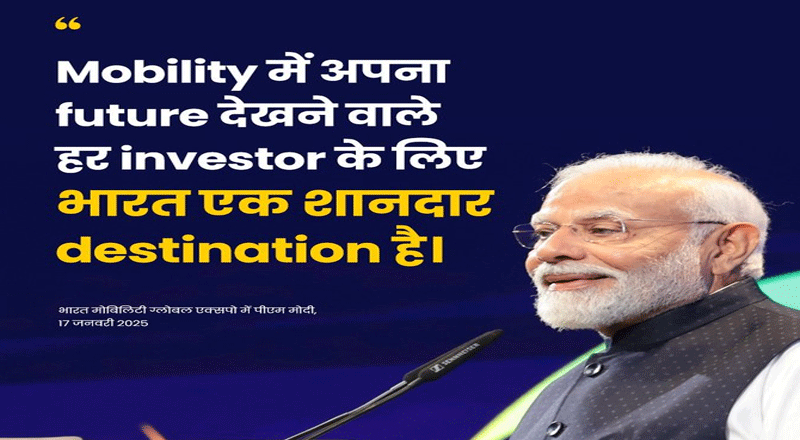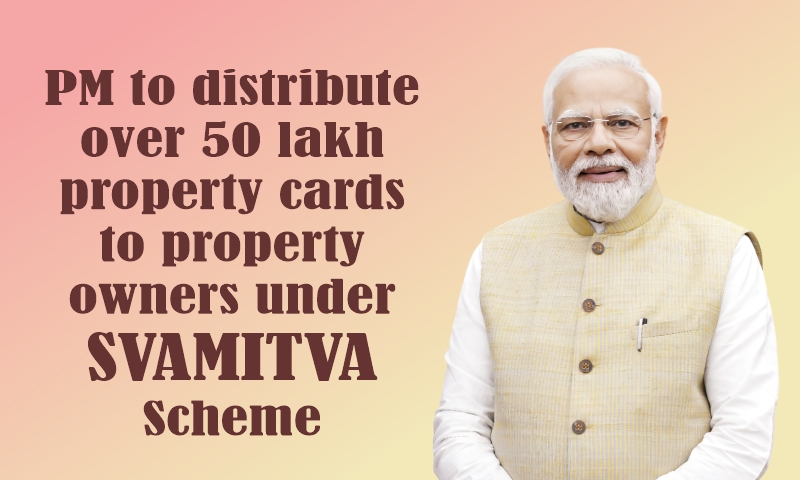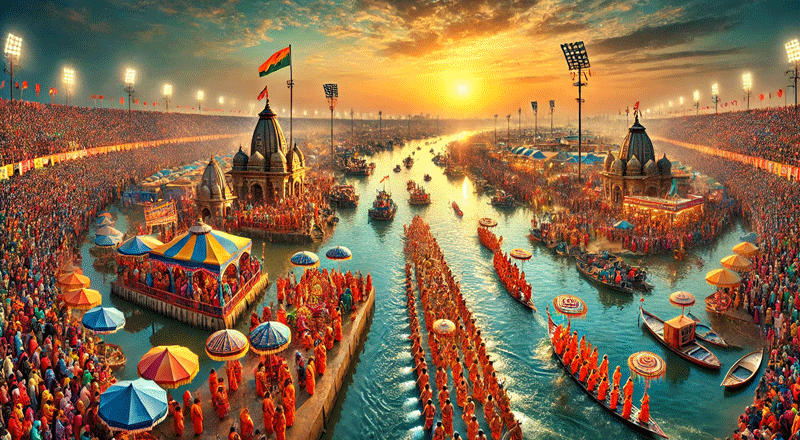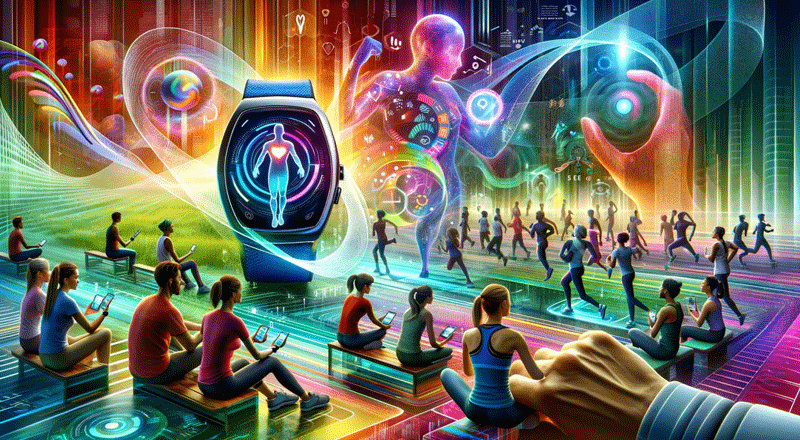The Prime Minister Shri Narendra Modi inaugurated the Bharat Mobility Global Expo 2025, the largest mobility expo in India, today at Bharat Mandapam, New Delhi. Addressing the gathering, he thanked the people for having their Government elected for the third consecutive time. He added that the scale of this year’s expo had greatly expanded with the expo happening at two other venues in the National Capital Region, as compared to last year’s numbers of 800 exhibitors, 2.5 lakh visitors. Shri Modi noted that over the next 5 days, there would be many new vehicles launched with lots of delegates attending the event. “This shows that there is great positivity related to the future of mobility in India”, he added. Mentioning his visit to the exhibition at the venue, Shri Modi exclaimed “ The automotive industry of India is fantastic and future-ready” and gave his best regards to everyone.
The Prime Minister reminisced Shri Ratan Tata and Mr. Osamu Suzuki during the grand event of the Indian Auto sector. He remarked that the contributions of both the stalwarts were immense in the growth of the Indian Auto sector as well as fulfilling the dreams of middle-class families of India. He expressed confidence that their legacy will continue to inspire the entire mobility sector of India.
“Driven by the aspirations of the people and energy of the youth, India’s automobile sector is witnessing an unprecedented transformation”, remarked the Prime Minister. He added that in the past year, the Indian Auto industry has grown by nearly 12%. He further remarked that the export was rising driven by the mantra of “Make in India and Make for the World”. Shri Modi remarked that the number of cars sold annually in India surpasses the population of many countries. He remarked that the sale of approximately 2.5 crore cars in a year demonstrates the continuously growing demand in India. The Prime Minister emphasized that this growth showcases why India is viewed with such high expectations when it comes to the future of mobility.
“India is currently the world’s fifth-largest economy and the third-largest passenger vehicle market”, highlighted Shri Modi. He remarked that as India ascends to become one of the top three economies globally, the country’s auto market will witness unprecedented transformation and expansion. The Prime Minister emphasized that several factors drive the future of mobility in India, including the country’s large youth population, the expanding middle class, rapid urbanization, modern infrastructure development, and affordable vehicles through the Make in India initiative. He added that these factors collectively push the growth of the auto sector in India.
Underscoring the importance of both need and aspirations for the growth of the auto industry, the Prime Minister remarked that India possesses both and emphasized that India will remain the world’s youngest country for many decades, with the youth being the largest customer base. He noted that this large youth demographic will create significant demand. Additionally, the Prime Minister pointed out that another major customer base is India’s middle class and over the past decade, 25 crore Indians have risen out of poverty, forming a neo-middle class that is purchasing their first vehicles. He added that as progress continues, this group will upgrade their vehicles, benefiting the auto sector.
Noting that the lack of good and wide roads was once a reason for not buying cars in India, the Prime Minister remarked that this situation is changing and said “Ease of travel is now a major priority for India”. He noted that over ₹11 lakh crore was allocated for infrastructure development in the last year’s budget. The Prime Minister highlighted that multi-lane highways and expressways were being constructed across India. He remarked that the PM GatiShakti National Master Plan had accelerated multimodal connectivity and reduced logistics costs. The Prime Minister emphasized that the National Logistics Policy will make India the country with the most competitive logistics costs globally. He noted that these efforts are opening numerous new opportunities for the auto industry and are a significant reason for the increasing demand for vehicles in the country.
“Along with good infrastructure, new technology is also being integrated”, said Shri Modi. He remarked that FASTag had made the driving experience in India much easier. The Prime Minister emphasized that the National Common Mobility Card is further strengthening efforts for seamless travel in India. He noted that India is now moving towards smart mobility, with rapid advancements in connected vehicles and autonomous driving.
Stressing the significant role of the Make in India initiative in the growth potential of India’s auto industry, the Prime Minister remarked that the PLI schemes had given new momentum to the Make in India campaign, aiding sales of over ₹2.25 lakh crore. He emphasized that this scheme has created more than 1.5 lakh direct jobs in the sector. The Prime Minister noted that job creation in the auto sector had a multiplier effect on other sectors. He highlighted that a large number of auto parts were manufactured by the MSME sector. He remarked that as the auto sector grows, new jobs are also created in MSMEs, logistics, tourism, and transport sectors.
Underlining the comprehensive support provided by the government to the auto sector at every level, Shri Modi remarked that over the past decade, new avenues for FDI, technology transfer, and global partnerships were established in the industry. The Prime Minister emphasized that in the last four years alone, the sector has attracted over $36 billion in Foreign Direct Investment. He noted that this figure was expected to multiply in the coming years. The Prime Minister reiterated the government’s commitment to developing a complete ecosystem for auto manufacturing within India.
Recollecting his vision of the “Seven Cs for mobility solutions”: Common, Connected, Convenient, Congestion-free, Charged, Clean, and Cutting-edge, the Prime Minister emphasized that the focus on green mobility is part of this vision. He remarked that India was building a mobility system that supports both the economy and ecology, reducing the import bill for fossil fuels. He noted that there was significant focus on the development of green technology, EVs, hydrogen fuel, and biofuels. The Prime Minister highlighted that initiatives like the National Electric Mobility Mission and the Green Hydrogen Mission have been launched with this vision in mind.
Emphasising the rapid growth of electric mobility in India over the past few years, Shri Modi remarked that the sale of electric vehicles has increased 640 times in the past decade. He noted that while only around 2,600 electric vehicles were sold annually ten years ago, over 16.80 lakh electric vehicles were sold in 2024. He emphasized that the number of electric vehicles sold in a single day today is double the number sold in an entire year a decade ago. The Prime Minister projected that the number of electric vehicles in India could increase eightfold by the end of this decade, showcasing the immense potential in this segment.
Stressing on the continuous policy decisions and support provided by the government for the expansion of electric mobility in the country, the Prime Minister remarked that the FAME-2 scheme, launched five years ago, had provided incentives worth over ₹8,000 crore. He emphasized that this amount was used to subsidize the purchase of electric vehicles and build charging infrastructure, supporting over 16 lakh EVs, including more than 5,000 electric buses. He noted that over 1,200 electric buses provided by the Union government were operating in Delhi. The Prime Minister highlighted the introduction of the PM E-Drive scheme in the third term, which will support the purchase of around 28 lakh EVs, including two-wheelers, three-wheelers, e-ambulances, and e-trucks. He emphasized that approximately 14,000 electric buses will also be purchased, and over 70,000 fast chargers will be installed across the country for various vehicles. The Prime Minister noted that the PM E-Bus service has been launched in the third term to support the operation of around 38,000 e-buses in small cities across the country. Underscoring the continuous support provided by the government for EV manufacturing, Shri Modi remarked that pathways were created for global investors interested in EV car manufacturing in India. He highlighted that these efforts will help expand the quality EV manufacturing ecosystem and build the value chain in India.
Stressing on the need to continuously promote solar power and alternative fuels to tackle the challenges of global warming and climate change, the Prime Minister remarked that during India’s G-20 presidency, there was a strong emphasis on a green future. He emphasized that significant work was being done in India on both EVs and solar power. He noted that the PM Suryagarh – Free Electricity Scheme is a major mission for rooftop solar. The Prime Minister highlighted the increasing demand for batteries and storage systems in this sector. He remarked that the Government had launched an ₹18,000 crore PLI scheme to promote advanced chemistry cell battery storage. Shri Modi underlined that this was the right time for significant investments in this sector. He urged the youth of the country to start startups in the energy storage sector. The Prime Minister emphasized the need to work on innovations that can create batteries and storage systems using materials available in India. He noted that considerable work is already being done in this area, but it was essential to advance it in mission mode.
Emphasizing the clear intent and commitment of the Union Government, Shri Modi remarked that whether it is formulating new policies or implementing reforms, the government’s efforts are ongoing. Urging the manufacturers to take advantage of the vehicle scrapping policy, he suggested that companies could introduce their own incentive schemes to encourage more people to scrap their old vehicles. The Prime Minister highlighted that this motivation was crucial and would be a significant service to the country’s environment.
The Prime Minister highlighted that the automotive industry was driven by innovation and technology. He stressed that the future belongs to the East, Asia, and India. The Prime Minister emphasized that India was an excellent destination for every investor looking to see their future in mobility. Concluding his address, Shri Modi reassured everyone that the Government was fully supportive and encouraged everyone to continue advancing with the mantra of “Make in India, Make for the World.”
The Union Minister for Road Transport and Highways, Shri Nitin Gadkari, Union Minister for Housing and Urban Affairs, Shri Manohar Lal, Union Minister for Heavy Industries and Steel, Shri H D Kumaraswamy, Union Minister for Commerce and Industry, Shri Piyush Goyal, Union Minister for Micro, Small and Medium Enterprises, Shri Jitan Ram Manjhi, Union Minister for Petroleum and Natural Gas, Shri Hardeep Singh Puri were present among other dignitaries at the event.
Background
The Bharat Mobility Global Expo 2025 is being held from 17-22 January, 2025 across three separate venues: Bharat Mandapam & Yashobhoomi in New Delhi and India Expo Center & Mart, Greater Noida. Expo will host over 9 concurrent shows, 20+ conferences and pavilions. In addition, the Expo will also feature states sessions to showcase policies and initiatives in the mobility sector to enable collaboration between industry and regional levels.
Bharat Mobility Global Expo 2025 aims to unite the entire mobility value chain under one umbrella. This year’s expo has a special emphasis on the global significance with participation from across the globe as exhibitors and visitors. It is an industry-led and government-supported initiative and is being coordinated by Engineering Export Promotion Council of India with the joint support of various industry bodies and partner organizations.










